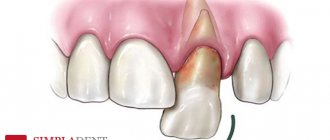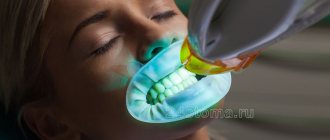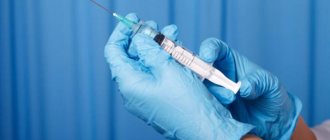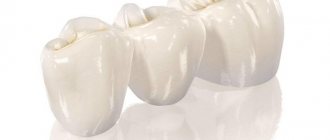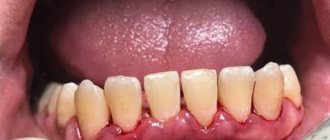Stages of sedation Types When treating children Possible complications Indications Preparation for the procedure Contraindications Anesthesia Alternatives
There are few people in the world who are not afraid of a visit to the dentist. Against the backdrop of such a widespread phobia, calls are increasingly being made to undergo treatment under sedation, without pain. What is it and is this method as safe as they say?
Dental treatment under anesthesia in adults is carried out in rare cases, more often in hospitals. But sedation is more common. This method causes inhibition of the nervous system to reduce panic and stress during the procedure. There is contact with the doctor, the patient is able to respond to stimuli. With this method of anesthesia, the patient breathes on his own, all his reflexes are preserved. This is the main difference between sedation and anesthesia, in which the degree of inhibition reaches such a level that consciousness turns off, reflexes are not preserved, and the patient does not respond to physical and verbal stimuli. The main purpose of anesthesia is to put the patient into a state in which he does not feel anything.
The main goal of sedation is not to harm the patient’s health, so before the procedure it is necessary to do a full examination of the body and obtain a conclusion from a general practitioner and anesthesiologist.
Sedation will help:
- relax during an unpleasant or painful procedure;
- perform local anesthesia without tension and fear;
- provide comfort, moral and physical;
- create a calm environment for the dentist to work.
Stages of sedation
- Easy
. The patient is in a state of relaxation, but is awake and makes contact with the doctor. Although his reactions and coordination are slightly reduced. This type of sedation is also called superficial. - Average
. A state of consciousness in which patients respond to tactile stimuli, all functions are preserved, reflexes work, and there is interaction with the doctor. - Deep
. The patient reacts only to strong stimulation; the patient does not respond to a call, but the cardiovascular system works normally. Breathing may become irregular
The next stage is complete anesthesia. With it, there is no reaction even to strong painful stimuli. Respiratory support is often needed.
Local anesthesia in pediatric dentistry. Application technique, safety
What is used and how does it affect the body? Why is anesthesia necessary and is it mandatory? I hope you will find answers to these and other questions in this article and, when you bring your child to an appointment, you will better understand the doctor’s decision.
So, let's start, as usual, from the beginning. Local anesthesia is a method of pain relief that blocks nerve impulses from the surgical site by interrupting nerve transmission. For this purpose, pharmacological drugs - local anesthetics - are used.
How long ago did this method begin to be used for dental procedures? Not so long ago, in 1885, infiltration anesthesia for dental treatment was first performed by Landerer, Witzel, and Voltaire in Germany. Novocaine was synthesized in 1905. And in 1921, the first carpule syringe with the ability to conduct an aspiration test was invented in Cook's laboratory. Today, dentists around the world have been using anesthesia using a carpule syringe for 100 years.
Currently, Articaine anesthetics with a vasoconstrictor are used. They are the most effective and safe. An allergic reaction to the anesthetic is certainly possible. However, a true allergy to the anesthetic itself is quite rare. Most often, negative reactions are associated with:
- Vasoconstrictor as part of the anesthetic. This is often not an allergy, but reactions such as increased heart rate, “fainting”
- Preservatives and stabilizers in the composition of the drug in the capsule, which are added to extend the shelf life of the anesthetic
In order to cope with the negative reaction that has arisen, there are always medications and first aid supplies in each office. And in order to prevent them, it is enough to carefully collect anamnesis from the parents and, if you are prone to allergies, carry out treatment “under the guise” (having previously taken) antihistamines.
As elsewhere, there are exceptions and there are health features, and they are necessarily taken into account by the doctor when choosing a carpule of local anesthetic and the method of its use.
Treatment for children differs somewhat depending on the age category and the tooth itself that needs to be anesthetized. We will analyze separately milk and permanent teeth, as well as some features of children’s age groups.
So, baby teeth. They have a similar structure to permanent ones; they have a “nerve” inside - pulp and long roots. They differ from permanent teeth in that the layers of hard tissue in them are thinner than in permanent teeth, and the pulp (“nerve”), on the contrary, takes up more space. That is why if caries has developed in a baby tooth, in a short period of time (3 months) it can develop into pulpitis. You need to know all this in order to understand: baby teeth are sensitive! Yes, some children have a high enough threshold for pain sensitivity so that treatment of caries of a baby tooth is painless for them. Often the parents of such children say something close to: “I was treated normally without an injection when I was a child.” In such children, theoretically, uncomplicated caries of baby teeth can be treated without using anesthesia. BUT!
Those “buts” again.
In the 21st century in Russia and not only the standard in the treatment of dental caries (both primary and permanent) is the use of composite materials (light-curing composite). They have many advantages compared to materials that were used previously. However, for their high-quality use, it is necessary to achieve COMPLETE DRYness of the enamel of the tooth being restored. How to achieve it?
- Isolation with a rubber dam (the same “lock” and “handkerchief” on the tooth). This allows you to dry the tooth and it will not get wet either by a child accidentally licking it or by condensation formed during breathing. Installing a rubber dam clamp is quite unpleasant and the gums on all sides of the isolated tooth must be numbed.
- Ensure that there is no leakage of gingival fluid or blood from the adjacent gum. This is exactly what the vasoconstrictor does in the anesthetic. That is, having given anesthesia, we locally constrict the blood vessels near the desired tooth. We get “dry” gums.
Total. To treat caries of primary teeth, we perform anesthesia, MAINLY to ensure the quality of treatment and long-term restoration. In this case, anesthesia of the tooth itself is secondary.
Of course, if we are talking about the treatment of complicated caries (pulpitis), then anesthesia is also needed so that the tooth itself does not feel anything, because in this case we are already working with the pulp (“nerve”).
For the treatment of permanent teeth, the question of priorities changes somewhat, since for most children it is still painful to treat permanent teeth. But in general, anesthesia is needed for the same purposes.
The decision to use or not to use local anesthesia for each child is made by the doctor together with the parent after a detailed clarification of the characteristics of the general health and psyche of the child.
We decided that this was really necessary. How to administer anesthesia to a small child? How do doctors do this? Each child’s psychological maturity is individual. Therefore, the schemes proposed below are only indicative. Up to 3.5 years, the use of local anesthesia has not been studied, therefore, up to this age, treatment under general anesthesia is considered the safest. However, this is another topic.
So:
3.5 - 6 years
To facilitate the perception of all dental procedures, fixate attention on the cartoon and increase the time of “quiet lying” in the chair, the baby can be offered support with nitrous oxide (supplied through a mask, the baby is conscious). This is also a separate topic for conversation, so we won’t dwell on it.
When the child lies in a chair, puts on glasses, watches a cartoon and is mentally prepared for the fact that he has come for treatment, the doctor describes to him the process of administering local anesthesia. Analogies are usually drawn with “freezing”. Initially, we do topical anesthesia, describing it as “I’ll anoint you with magic jam”, “I’ll apply cold gel”. This is necessary to initially reduce the sensitivity of the mucous membrane.
Next, we inject the needle and inject the first portion of anesthetic, literally “drops”. We describe it as “I’ll put a piece of ice”, “we’ll enchant a microbe like Elsa with the cold”, “I’ll drop a very cold drop”, “we’ll start sculpting Olaf and it’ll get cold.” At this moment, if the child does not cry out and does not turn away, so as not to carry out unnecessary injections, we continue the slow injection of the anesthetic, describing it as “rolling a snowball”, “starting to sculpt a snowman”, “making a cold pad”. If the baby screams and turns his head away, then we limit ourselves to the first drop and calm him down, praise him, explain that “it was the coldest, there was a fluffy snowball left.” After you have calmed down, we continue injecting the anesthetic into the same place where you started. It is no longer so painful, since the first drop has worked.
The following is important at the moment: parents should not use the words “it doesn’t hurt”, “it’s not scary”, “just a prick”, “be patient with the prick”, etc. We believe that many kids can muster the will to endure an injection, just like in a clinic for a blood collection or vaccination.
But we ask you, do not forget, after those injections the baby goes home in 2 minutes! His mother immediately hugs him, praises him and consoles him! And in our chair, the “prick” is just the beginning of treatment. And by asking the child to “just be patient with the injection,” even if he can do it, we give him false hope that after this he will get up right away! That's it, he suffered. He can go. Half of the child’s psychological readiness pool is lost due to one not entirely appropriate phrase.
A child under stress does not perceive the particle “not”. When you say “it doesn’t hurt,” the child hears “it hurts.” Therefore, doctors try to describe what is happening in other words. We replace “painful” with “unpleasant”, “hard”, “cold”. Children vividly imagine these concepts and can handle them much easier than a “prick”.
Dear parents! I hope it is now clear that we do not want to deceive your children, but in order for them to allow us to treat them for 30-40 minutes, we must be extremely careful in our expressions, tactful and sensitive.
6-12 years
In general, the concept of anesthesia is the same. The difference is that children of this age group can ask directly: “Will there be an injection?” In this case, our task is to be honest, but to help the child cope with fear. For this, different comparisons are also used. Here parents can help a lot by whispering in the doctor’s ear, “It’s better not to tell him that this is an injection, play around with it somehow,” or vice versa, “She hates lies, it’s better to show her the syringe.”
12-18 years old
The concept has not changed. Most often, children are prepared for treatment and normally perceive the need for local anesthesia. But in this age category, we can ask the child himself which moment is most unpleasant for him, what to emphasize. Some people do not like the taste of topical anesthetic, and they are willing to endure a more painful needle injection, just not for this taste. Someone asks to treat him “like a baby.” Some people want their assistant to wash it with water at the same time, then it will hurt less, etc.
Let's summarize.
In most cases, local anesthesia is needed to treat children. The child must be prepared for treatment (either adaptation, sedation, or be psychologically mature). Then, acting as a child-parent-doctor team, we can successfully carry out treatment in the most comfortable way for the child. Do not forget that the feeling of numbness goes away from 40 minutes to 1.5-2 hours, so we always remind: “Please watch your lip during this time, do not let the baby bite it!”
Types of sedation in dentistry
There are quite a few ways to administer relaxing drugs, but only a few of them are used in dental clinics:
- Inhalation
. The most common mind control technique. The advantages of dental treatment under sedation through inhalation: quick effect, the process is easy to control, consciousness is restored in a very short period of time. The most common use is nitrous oxide. It has a relaxing effect, reduces motor activity and has some analgesic properties. Subject to the rules of supply and percentage of gases, there are practically no side effects. - Injection
. The drug is administered once, as an injection or gradually, through an intravenous infusion system. The most well-known drugs are profopol and medazolam. Their hypnotic effect allows dental treatment to be performed while you sleep, while maintaining basic reflexes and spontaneous breathing. Recently, dexmedetomidine has been increasingly used because it does not lower blood pressure. - Oral medication
. If the patient is afraid of the needle, but calmly takes the pills, they can be used. - Intranasal dispersion
. An anesthetic is sprayed into the nasal passages. So the drug, through the taste buds, immediately enters the brain. Quick effect, bioavailability, central action and ease of use make sprays very popular.
Types of local anesthetics
All medications used by dentists are based on substances from one of two chemical groups:
- Esters: novocaine, tetracaine (dicaine), benzocaine (anesthesin). These compounds are not very stable and are quickly destroyed in body tissues, so their effect is short-lived.
- Amides: lidocaine, trimecaine, melivacaine, bupivacaine, ultracaine (articaine). They are stable, penetrate deep into tissues and, accordingly, provide more effective pain relief [1].
Sedation in pediatric dentistry
Up to 50% of children
[1] hide dental problems due to fear of treatment. This affects their quality of life and oral health both in childhood and when they grow up. Therefore, the use of mind control measures when providing dental care to children is justified, subject to strict adherence to rules and regulations. Most often, medicated sleep during dental treatment in children is achieved using nitrous oxide, but there are studies that have confirmed the effectiveness of the use of other medications. It is worth remembering that sedation should be used only when no other method of dental treatment for a child does not work. This will help avoid harmful consequences.
The drug "Sevoran" in modern pediatric dentistry
It is difficult to imagine modern pediatric dentistry without anesthesia - young patients cannot always tell what exactly is hurting them, and do not allow the doctor to do a full examination. Until recently, young children did not receive dental treatment, which was fraught with damage to baby teeth, and as a result, permanent teeth could form incorrectly. Treatment and removal of teeth under anesthesia is an excellent option for pediatric dentistry.
The drug Sevoran (sevoflurane), produced by Abbott Laboratories, is often used as dental anesthesia in children's clinics. It is believed that Sevoran is one of the safest drugs for anesthesia today.
The main active ingredient of Sevoran is sevoflurane. The drug is supplied in liquid form, packaged in dark 250 ml bottles. Before use, Sevoran is poured into an evaporator, where it turns into a gaseous state and provides the child with inhalation anesthesia.
Kon is adjusted using an anesthesia machine, which helps influence the duration and depth of dental anesthesia. Using Sevoran, you can perform not only treatment or tooth extraction, but also other surgical procedures such as removal of a defect in the frenulum of the lip or tongue.
“Sevoran” has established itself as a safe drug with minimal side effects, and although it is used quite rarely for adults, in pediatric dentistry it is indispensable for the treatment and removal of teeth under anesthesia.
Consequences of sedation in dentistry
Specific problems with the use of mind control drugs depend on the route of administration and the mechanism of action of the drugs.
At the beginning of the procedure, you may experience increased activity, physical restlessness, talkativeness, and increased sociability.
A common symptom is an obsessive cough. This problem can be stopped by reducing the dose of the drug. Complications after sedation can appear both immediately and in a delayed period.
Possible short-term complications
- Breathing disorders (slow breathing, lack of oxygen);
- problems with hemodynamics (drop in blood pressure, irregular heart rhythm);
- depression of the central nervous system;
- intestinal dysfunction, vomiting.
Delayed symptoms
- Development of psychoses;
- hallucinatory syndrome;
- paralysis.
Is sedation dangerous? No, if it is carried out by an experienced doctor who has undergone special training, and the clinic is equipped with everything necessary to eliminate the consequences. But this is not a magic pill that can be prescribed to everyone without thinking about the consequences.
Anesthesia methods in dentistry:
- Applique. The drug (spray or gel) is applied to the surface of the gums. The action is instantaneous, but minimal in strength. Anesthesia is sufficient for opening the abscess, removing tartar, or subsequent injection.
- Intraligamentous. An injection into the mucous membrane between the root and the hole. The injection does not cause numbness of the tongue, lips and cheeks, therefore it is used in pediatric dentistry (the child often bites a “frozen” cheek or tongue). The method is suitable for tooth extraction, treatment of complex caries, pulpitis.
- Infiltration anesthesia in dentistry is a classic injection of an anesthetic into the upper part of the root. It lasts for about an hour - quite enough to clean the canal and remove the nerve. To relieve discomfort from the moment of injection, the doctor treats the injection site with a special gel.
- Conductive anesthesia is used when infiltration does not work or it is necessary to anesthetize several teeth at once. The injection is made into the trunk of the nerve. The effect of the drug extends to the lower jaw, lower lip, part of the cheek and tongue.
- Superficial sedation is a method of anesthesia that puts the patient into a sleep-like state. Hence another name for the procedure – “sleeping” anesthesia in dentistry. The patient does not feel anxiety or fear and reacts to the dentist’s call. The best option for dental treatment for young patients (can be used from 4 years old).
The other side of the coin: possible complications
The professionalism of the dentist minimizes complications after anesthesia in dentistry. But forewarned is forearmed - here is a list of possible troubles:
- hematoma of mucous tissues;
- swelling of the gums;
- infection through infected mucous membranes;
- spasm of the masticatory muscles;
- allergy to anesthetic.
Another possible difficulty: pain relief is ineffective. Why does anesthesia not work during dental treatment? There are several reasons that reduce anesthesia to “no”:
- hypertrophied feeling of fear;
- drinking alcohol before the procedure;
- individual insensitivity to the drug.
How to treat teeth for expectant mothers
Is it possible to treat teeth with anesthesia during pregnancy? Always a hot topic. A tooth can get sick at any time, and expecting a baby is no exception. Modern methods of local anesthesia make it possible to treat teeth even for women in an interesting position. The drug “Ultracain”, which is administered by injection, has proven itself to be excellent. Dental anesthesia during pregnancy eliminates discomfort in the expectant mother and does not harm the health of the child.
Trust the professionals and forget about the discomfort in the dentist's chair forever! Enjoy your treatment!
Indications
Dental sedation is indicated in a state of increased excitability, fear of treatment, but is not limited to this. This method must be used if there is:
- strongly expressed gag reflex;
- mental problems that exclude interaction with the patient;
- traumatic manipulations.
Like any medical intervention, mind control using medicinal methods requires careful preparation. The decision is made by the doctor taking into account all the data.
Contraindications to sedation
Like any medical procedure, depression of consciousness has contraindications. There are very few of them. The only absolute contraindication is myasthenia gravis (muscle weakness). The remaining states are relative. These are drug or alcohol intoxication, hypotension, a full stomach, a disorder of consciousness that prevents interaction with the patient, pregnancy, a condition after an acute heart attack/stroke. An opinion on the possibility of carrying out this procedure can only be issued by a general practitioner and an anesthesiologist.
The choice of method may also be limited. Thus, inhalation methods are contraindicated for sinusitis and other diseases of the upper respiratory tract. The doctor must know about all diseases in order to select the appropriate drug for a particular one in order to use medicinal sleep in dental treatment without consequences. That is why it is important to treat teeth in a clinic with modern technical facilities. Typically, such dentists employ experienced anesthesiologists and have equipment for first aid.
Contraindications for dental treatment under anesthesia
In a situation where a patient needs surgery for health reasons, it can be performed under anesthesia, so there are no absolute contraindications for general anesthesia.
The anesthesiologist should be especially attentive to the following patients:
- with heart rhythm disturbances;
- with heart disease and heart failure;
- have had a myocardial infarction or stroke less than six months ago;
- with severe diseases of the endocrine system;
- with functional pathologies of the liver and kidneys;
- with bronchial asthma in the acute stage;
- recently suffered from a severe infectious disease.
During planned anesthesia, a full stomach is also an absolute contraindication. The patient should not eat for at least 6 hours before anesthesia, and drink for 4 hours. In addition to general contraindications to anesthesia, it should be understood that any drug used for its administration also has its own indications and contraindications.
Anesthesia in dentistry
There are medical terms that in ordinary life lose their meaning or acquire additional meaning. One example is the expression “to treat teeth under anesthesia.” In 99% of cases, this expression refers to ordinary sedation. Due to a common mistake, even dentists sometimes use the term “anesthesia,” although this means depression of consciousness with preservation of reflexes and responses.
Dental treatment under general anesthesia is performed extremely rarely. Its administration requires special equipment and conditions. Usually, this happens in a hospital, by an oral and maxillofacial surgeon, as a procedure accompanying the operation. During manipulation, constant monitoring of blood pressure, heart rate, respiratory rate, and blood oxygen saturation is required.
General anesthesia during dental treatment means a complete shutdown of consciousness, including protective reflexes, which can be dangerous. The patient should not choose the method of pain relief himself; this can only be done by a doctor after a certain examination.
How is dental treatment performed under anesthesia in adults?
How is dental treatment performed under anesthesia in dentistry? First, you need to come for a consultation at the clinic to discuss dental treatment under general anesthesia.
The duration of anesthesia is determined depending on the patient’s age, his state of health and the required amount of treatment. Throughout the operation, the patient's condition is monitored by an anesthesiologist. It controls the vital functions of all organs. Upon recovery from anesthesia, reflexes gradually begin to recover; this takes about five minutes, but the anesthesiologist continues to monitor the patient for some time. A person goes home, as a rule, accompanied by someone. Under no circumstances is it recommended to drive a car after anesthesia.


